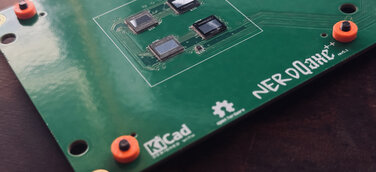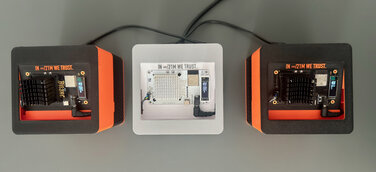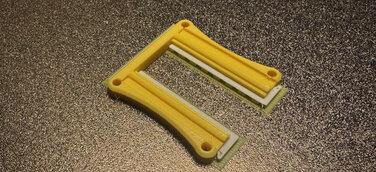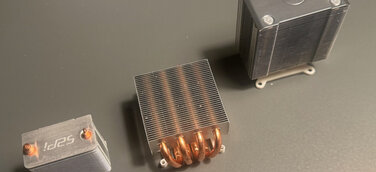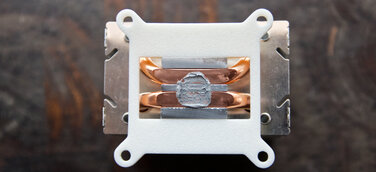The order for the last two tubes from the dealer went out quickly, but the shipping took an unusually long time. Today the order finally arrived and I actually wanted to test the performance with my Bitaxe Supra, the Silicon Lottery winner, on the OC'axe Prototype 1.

Manufacturer
Risk of the Bitaxe freezing with sorbet on the ASIC
A few days ago on X I wrote that I had found a new extremely good one with a high thermal conductivity of 15.2 W/m.K, Alpenföhn® Blitzeis. Is it really a performance winner or is it just marketing?

Specifications of Alpenföhn® Blitzeis
Alpenföhn® itself describes the paste as follows:
Blitzeis! Watch out for maximum coolness in your system immediately after the first time of use. Thanks to the extreme thermal conductivity of 15.2 W/m*K, this is the ideal thermal paste for everyone who wants maximum performance. The extensive accessories allow easy and clean application. The Grease Pass is your ticket to permanently low temperatures in your system. Blitzeis can be used on aluminium and copper, is electronically non-conductive and features long-lasting stability. The package content of 2g is sufficient for multiple use.
The data from the datasheet is certainly very impressive:
| Thermal conductivity | 15.2 W/m*K | ||||
| Viscosity | 130 Pas | ||||
| Working temperature | -20 °C - +130 °C | ||||
| Specific gravity | 2.5 g/ml | ||||
| Thermal Impedance | 0.001 °C-in²/W |
Further information can be found on the Alpenföhn® product page.
Test environment
The “ck Pool” was used for benchmarking under the beautiful analysis and statistics UI, which was lovingly created by Mr V. The project has been released as open source and the maintainer of the “ck Pool” gives that project officially at “ck pool” to implement. It is now live and can be admired at http://solostats.ckpool.org, thanks for the great work at this point.
Residues of the old thermal paste were removed from the ASIC processor and the cooler with 99.9% isopropanol to prevent the thermal pastes from mixing.
The test was carried out on a Bitaxe Supra, on OC'axe prototype 1, in order to simulate the maximum load as well as possible. The fan on the Bitaxe Supra in AxeOS was manually set to 100% so that the same airflows would prevail for both measurements.
A Noctua NF-A6x25 5V PWM is mounted on the 139.5 gram copper cooler, and a Noctua NF-A12x25 5V PWM is mounted in the OC'axe. The cooler was attached to the PCB with screws. Firmware 2.2.2, room temperature was 23°C.
The Supra was configured to 1050 Mhz with an ASIC voltage of 1,500 v. Copper heat sinks were attached to the hottest spots, especially Mosfets Q1 & Q2, as well as a cooler next to the DC plug on the front of the home mini miner. The Supra ran at maximum load for one hour each with different thermal pastes, Thermal Grizzly Kryonaut (12.9 W/m*K) and Alpenföhn® Blitzeis (15.2 W/m*K).
Processing the heat-conducting paste
When the paste is cooler, between 15-16°C, the thermal paste is a little difficult to apply, but at normal room temperature from 20°C, it is very easy to work with. In fact, it is a little thicker than Grizzly's thermal paste, even at 23°C room temperature, but it is easy to spread with a spatula.
The Alpenföhn® Blitzeis thermal paste is not suitable for nitrogene or immersion cooling solutions. Of course, it is also not conductive, as all thermal pastes should be in the IT sector, especially when it comes to processors on PCBs.
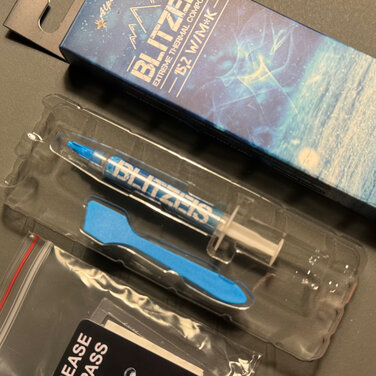
Operation with Thermal Grizzly Kryonaut
The Thermal Grizzly Kryonaut is already an excellent thermal paste with great properties. The picture below was taken after one hour of operation with the thermal imaging camera and the data from the AxeOS.
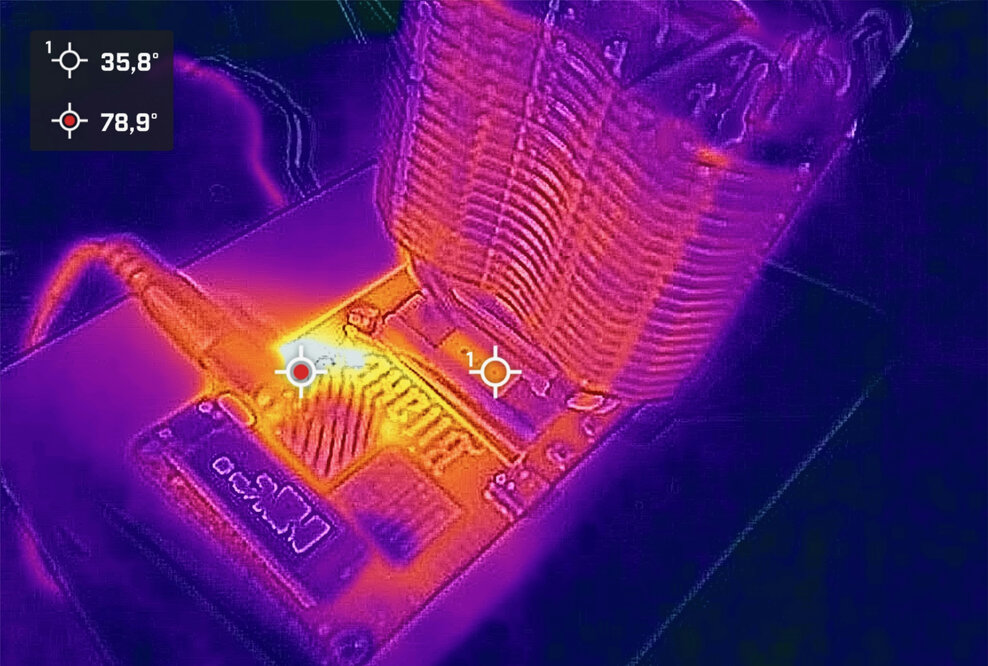
| MHZ | Voltage | Avg. hash rate | Power | ASIC temp AxeOS | ASIC cooper thermal cam. | Fan % | FAN RPM | Hint |
|---|---|---|---|---|---|---|---|---|
1050 | 1.500 | 1339 | 46.50 W | 55 °C | 35.8 °C | 100 | 1945 | 1h run |
As you can clearly see, the Bitaxe is already printing with excellent values when you set the fan to auto mode, it would probably be barely audible. At the end of the test after about an hour, the hash rate has even skyrocketed, as you can see from the screenshot.
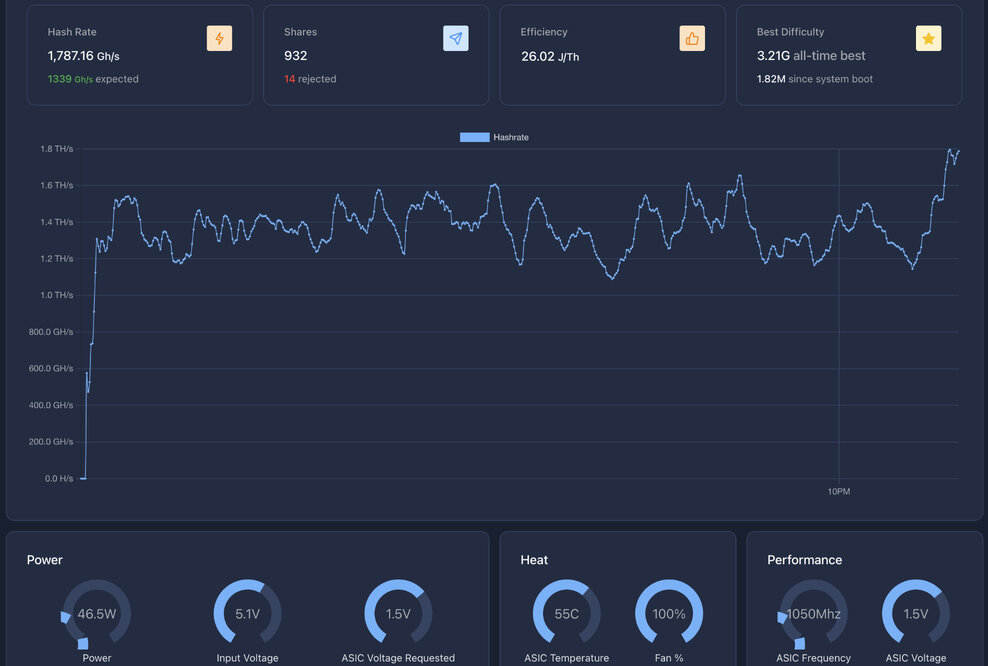
Operation with Alpenföhn® Blitzeis
The thermal image taken under the same test conditions clearly shows that the base of the copper cooler is about 1.8°C cooler, but so is the hottest spot on the top side of the Bitaxe circuit board, next to the DC plug. In fact, an incredible 2.1 °C less, so less power was consumed, which would probably explain this temperature drop. You can also find the table with the values and a screenshot from the AxeOS attached.
| MHZ | Voltage | Avg. hash rate | Power | ASIC temp AxeOS | ASIC cooper thermal cam. | Fan % | FAN RPM | Hint |
|---|---|---|---|---|---|---|---|---|
1050 | 1.500 | 1339 | 45.70 W | 51 °C | 34.0 °C | 100 | 1940 | 1h run |
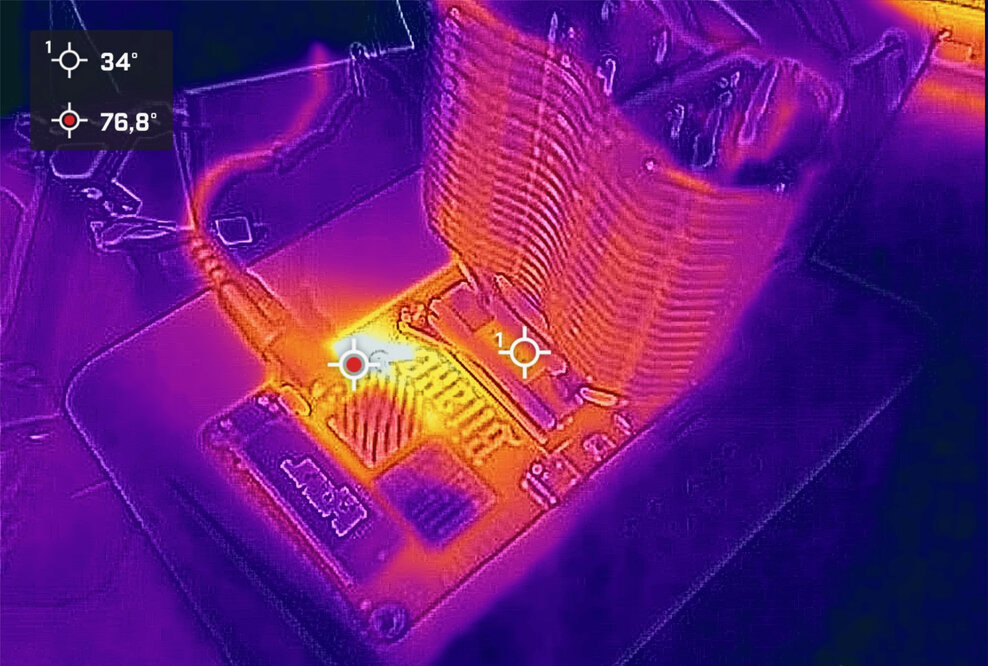

Results
With the same test setup and conditions, the ASIC processor actually does get significantly cooler. It may seem like it's not much... only 4 degrees. But keep in mind that we have a reference cooler made of 100% copper here, which is extremely massive and oversized for the Bitaxe at 139.5 grams, and which can dissipate waste heat extremely quickly anyway due to the material.
The only layer between the cooler and the fan is the thermal compound. With another cooler, such as the “Ice Tower”, the temperature reduction should be even more significant, which in turn means that the fan will run significantly slower and thus also quieter.
With the new heat transfer compound from Alpenföhn®, which has an extremely high thermal conductivity of 15.2 W/m.K and is therefore also higher than Thermal Grizzly Kryonaut and Thermal Grizzly Kryonaut Extreme, a cooling increase of 4 degrees Celsius could be determined.
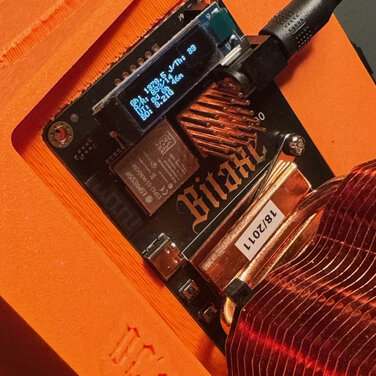
| Thermal compound | MHZ | Voltage | Avg. hash rate | Power | ASIC temp AxeOS | ASIC cooper thermal cam. | Fan % | FAN RPM | Hint |
|---|---|---|---|---|---|---|---|---|---|
| Thermal Grizzly Kryonaut | 1050 | 1.500 | 1339 | 46.50 W | 55 °C | 35.8 °C | 100 | 1945 | 1h run |
| Alpenföhn® Blitzeis | 1050 | 1.500 | 1339 | 45.70 W | 51 °C | 34.0 °C | 100 | 1940 | 1h run |
Here are some comparative values when I run the Bitaxe Supra on the OC'axe with normal settings, i.e. normal in the sense of, in this setup. Here, a significant temperature reduction from 52°C to 47°C could be achieved. The fan runs silently, in auto mode, at 41%.
| Thermal compound | MHZ | Voltage | Avg. hash rate | Power | ASIC temp AxeOS | ASIC cooper thermal cam. | Fan % | FAN RPM | Hint |
|---|---|---|---|---|---|---|---|---|---|
| Alpenföhn® Blitzeis | 863 | 1.375 | 1101 | 28,40 W | 47 °C |
| 41 | 1318 | 1h run |
In fact, Alpenföhn® Blitzeis is significantly cheaper than its competitor's product, at around 12.00 EUR for 2 grams. 2 grams is sufficient for many applications, for an ASIC on the Bitaxe.
The improvement could not only be seen in the AxeOS dashboard, but was also actually tested and measured under physical conditions with a professional thermal imaging camera.
Thus, I would like to recommend this thermal paste to overclockers and enthusiasts. It can be used for overclocking, but it is also recommended to replace the standard thermal paste with this paste for significantly better heat transfer to the cooler. Especially because it is so inexpensive, comes in a sufficiently sized tube and has such a high thermal conductivity of 15.2 W/m.K.
It seems that this paste will be the first choice in my assortment when it comes to extreme overclocking. The second choice would still be the Thermal Grizzly Kryonaut Extreme and the third, of course, Thermal Grizzly Kryonaut.
It is just a bit problematic to get the thermal paste, it Alpenföhn® Blitzeis is often sold out and is primarily only available in Germany/EU.
Plebs from the USA would have to check with them to see if this thermal paste is also sold in the USA, otherwise bite the bullet and order it from the EU shop via Amazon.

Interested in digital progress, alternatives in finance, Bitcoin mining processes, in particular open source developments.
